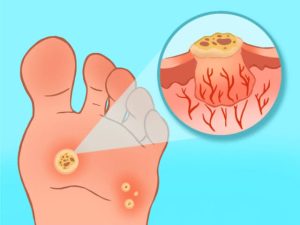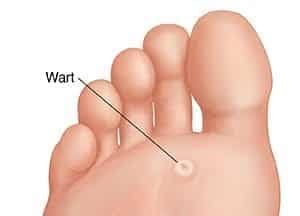With her newfound confidence, Aria began to share her story with others, inspiring those around her to embrace their own imperfections. She started a movement, dubbed the “Dermadynamos Revolution,” which spread like wildfire across social media platforms. People from all over the world shared their own stories of overcoming adversity, and soon, the hashtag #Dermadynamos was trending globally.
Aria’s message resonated with people of all ages, cultures, and backgrounds. She became a beacon of hope for those struggling with self-acceptance, and her Dermadynamos became a symbol of strength and resilience. As the movement grew, Aria was approached by media outlets, talk shows, and even book publishers, all clamoring to share her inspiring story with the world.
Through her journey, Aria realized that her Dermadynamos were not just physical growths, but also a metaphor for the inner strength and beauty that lay within her. She learned to love herself, imperfections and all, and in doing so, inspired a global community to do the same. Aria’s story was a powerful reminder that our imperfections are what make us unique, and that our struggles can become our greatest strengths. The Dermadynamos Revolution was just the beginning, and Aria’s inspiring story would continue to inspire generations to come.
What are warts?

Warts are small, rough, and hard growths on the skin that are usually caused by the human papillomavirus (HPV). They can appear anywhere on the body, but are most commonly found on the hands, feet, and genitals.
There are several types of warts, including:
1. Common warts (verruca vulgaris)
2. Plantar warts (verruca plantaris)
3. Genital warts (condyloma acuminata)
4. Flat warts (verruca plana)
5. Subungual warts (under the nail)
Warts are highly contagious and can be spread through skin-to-skin contact with an infected person. They can also be spread through contact with contaminated surfaces or objects.
Warts are usually harmless, but they can be painful and unsightly. Treatment options include over-the-counter remedies, prescription medications, and surgical removal.
It’s important to note that warts can take time to develop after exposure to the virus, and it’s possible to have the virus without showing any symptoms. If you suspect you have warts, it’s best to consult a healthcare professional for proper diagnosis and treatment.
Causes
1. Human Papillomavirus (HPV)
2. Weakened immune system
3. Skin injuries or cuts
4. Moist environments
5. Sharing personal care items
6. Touching contaminated surfaces
7. Poor hygiene
8. Genetics
9. Hormonal changes
10. Stress
11. Vitamin deficiencies (e.g., vitamin B12)
12. Mineral deficiencies (e.g., zinc)
13. Certain medications (e.g., chemotherapy drugs)
14. Skin conditions (e.g., eczema, psoriasis)
15. Allergies
16. Irritation from tight clothing
17. Excessive sweating
18. Poor diet
19. Digestive issues (e.g., constipation)
20. Environmental toxins (e.g., mercury, lead)
It’s important to note that warts can be caused by a combination of these factors, and not just one single cause. Additionally, some people may be more susceptible to developing warts due to their individual circumstances. If you suspect you have warts, it’s best to consult a healthcare professional for proper diagnosis and treatment.
Signs and Symptoms
1. Small, rough, and hard growths on the skin
2. Pain or discomfort in the affected area
3. Itching or burning sensation
4. Skin lesions or bumps
5. Discoloration of the skin (e.g., white, pink, or brown)
6. Small black dots (seeds) on the surface of the wart
7. Redness and inflammation around the wart
8. Bleeding or crusting
9. Warts may be tender to the touch
10. In rare cases, warts can be painful or bleed
Symptoms may vary depending on the type of wart and the individual’s overall health.
If you’re experiencing any of these symptoms, it’s essential to consult a healthcare professional for proper diagnosis and treatment.
Prevention
1. Practice good hygiene: Wash your hands frequently, especially after touching surfaces or people.
2. Avoid close contact with people who have warts.
3. Wear shoes or sandals in public areas like pools, gyms, or showers.
4. Keep your skin clean and dry.
5. Avoid sharing personal care items like towels, razors, or nail clippers.
6. Wear gloves when handling plants or animals that may carry the virus.
7. Keep your immune system strong through a healthy diet, exercise, and sufficient sleep.
8. Avoid biting or picking at your skin, as this can spread the virus.
9. Use a condom during sexual activity to prevent genital warts.
10. Consider getting the HPV vaccine, which protects against certain types of warts.
11. Avoid sharing makeup or skincare products.
12. Clean and disinfect surfaces regularly.
13. Avoid walking barefoot in areas where warts are common.
14. Wear socks or shoes that breathe to keep your feet dry.
15. Avoid excessive sweating by staying cool and dry.
Remember, prevention is key! By following these tips, you can reduce your risk of getting warts. However, if you do get warts, early treatment can help prevent them from spreading and promote faster healing.
Treatment
1. Salicylic acid: Over-the-counter (OTC) medications containing salicylic acid, such as Compound W or Duofilm, can help dissolve the keratin protein that makes up the wart and the dead skin that surrounds it.
2. Cryotherapy: Freezing the wart with liquid nitrogen can kill the virus and eventually cause the wart to fall off.
3. Cantharidin: A blistering agent made from the secretions of the blister beetle, cantharidin is applied to the wart and causes a blister to form under the wart, lifting it off the skin.
4. Imiquimod cream: A topical cream that stimulates the immune system to fight off the virus.
5. Podophyllin: A topical solution that contains podophyllotoxin, which helps to kill the virus.
6. Surgical removal: In some cases, warts may need to be surgically removed, especially if they are large or in a sensitive area.
7. Laser treatment: Laser therapy can be used to target the blood vessels that feed the wart, cutting off its supply and causing it to eventually fall off.
8. Home remedies: Some home remedies, such as duct tape, garlic, and tea tree oil, may also be effective in treating warts.
9. Prescription medications: In some cases, your doctor may prescribe medications such as bleomycin or cimetidine to help treat warts.
10. Immunotherapy: This treatment uses a vaccine to stimulate the immune system to fight off the virus.
It’s important to note that it may take some time and repeated treatments to fully remove a wart, and it’s also possible for warts to recur. Consult a healthcare professional to determine the best treatment plan for your specific case.

